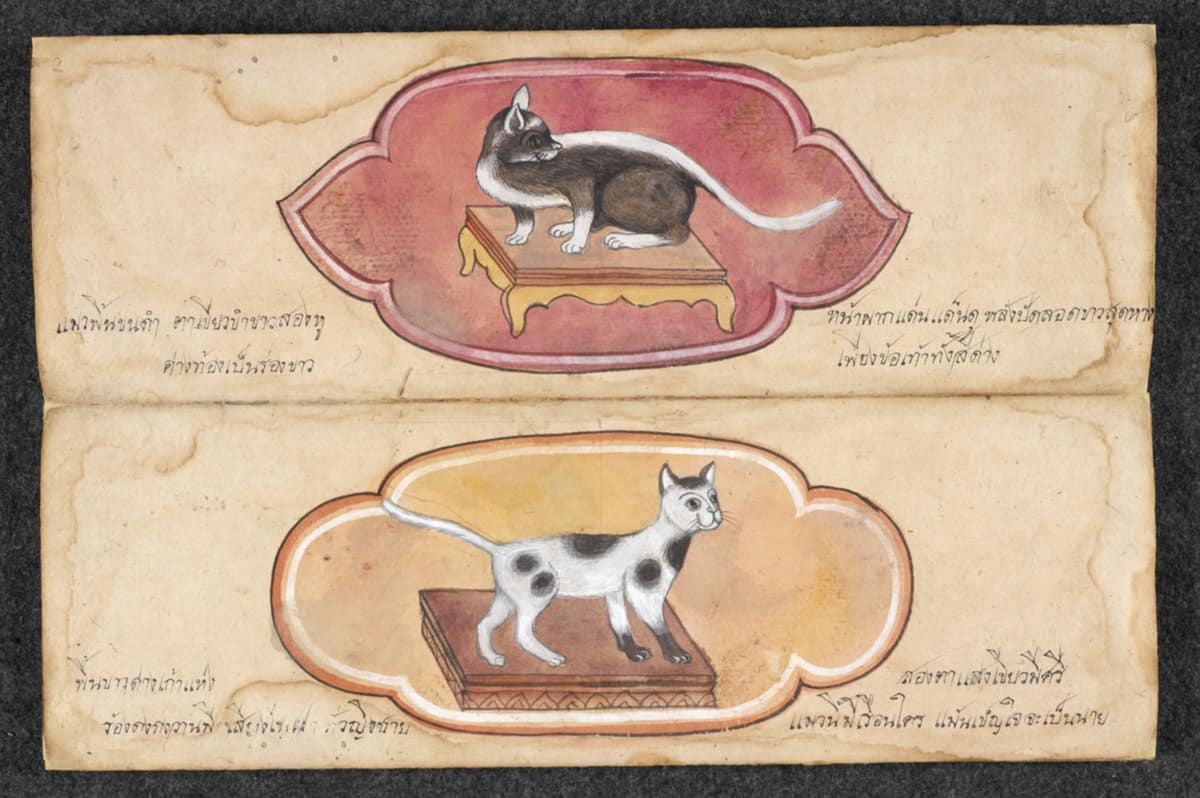Treatise on Cats in a manuscript produce in the 19th century in Siam (now called Thailand). Created using mulberry bark paper with watercolor drawings, the 12-folio manuscript in the form of a Thai folding book (samut khoi) provides the viewer with insight on the attitude towards different cats.
19th century Thai culture believed that certain cats, as well as other animals, could have different affects on their owners.
The Treatise on Cats highlights 23 different cats and their attributes. Some cats were believed to bring good luck to their owners, while other cats were believed to be harbingers of bad luck.
Cats that bring good luck are auspicious cats that could bring their owners fortune, status, or good health.
For example, Kao Taem (Nine Points) is a cat with green eyes and a white coat with black spots who believed to bring good luck to its owner. Even a poor owner will be blessed with a better social status.

Known as Suphalak (Excellence) or Thong Daeng (Copper), this copper cat was believed to have the power to change evil to contentment.

Cats that were believed to bring bad luck are inauspicious cats that would bring their owners misery, trouble, or death.
Tupphalaphet (Weakness) is a cat with completely white fur and red eyes. This cat was believed to bring trouble and would steal fish.

References
Breedlove, B., & Igunma, J. (2020). In Consideration of Our Mutual Relationship with Cats. Emerging Infectious Diseases, 26(12), 3108.doi: 10.3201/eid2612.AC2612
Clutterbuck, M. R. (1998). The legend of Siamese cats. White Lotus Press.
Clutterbuck, M. (2008). Inventory / Auspicious cats. CABINET /. https://www.cabinetmagazine.org/issues/30/clutterbuck.php
Treatise on cats. (2014, August 14). World Digital Library Home. https://www.wdl.org/en/item/14291/







